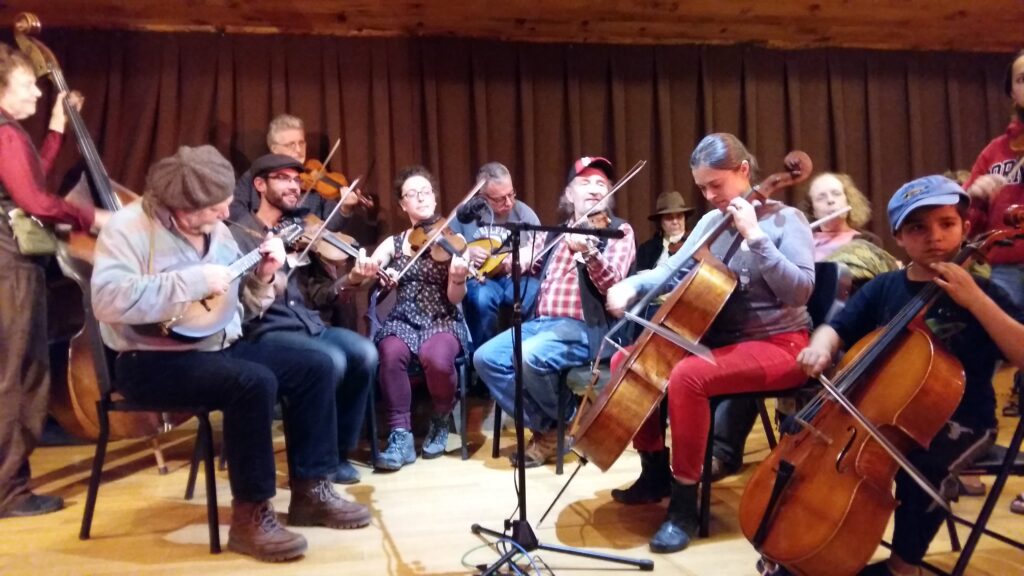Nestled in the heart of the Catskills, Woodstock, New York, is globally synonymous with peace, love, and music. While the 1969 Woodstock Festival famously happened 60 miles away in Bethel, the spirit and essence of the Woodstock name embody a much longer, deeper history tied to music and community. One genre, in particular, has woven itself through the town’s fabric: folk music. From early gatherings to modern-day festivals, Woodstock’s relationship with folk music is both profound and enduring, and its story reflects a cultural evolution that speaks to the heart of American identity.
Roots in Tradition
The roots of folk music in Woodstock trace back to the early 20th century, when artists, musicians, and writers first began to gather here, drawn by the region’s natural beauty and artistic inspiration. Woodstock’s creative spirit found an anchor when Ralph Radcliffe Whitehead, Bolton Brown, and Hervey White established the Byrdcliffe Arts Colony in 1902. The colony was an artist utopia that attracted writers, painters, and musicians who were interested in exploring new forms of artistic expression. Folk music, with its deep roots in storytelling and simplicity, was naturally at home here. Traditional folk songs sung by early settlers and influenced by Celtic, African, and Indigenous music began to echo through the hills, fostering a connection between the land and the sounds that would define the area for decades to come.
The Rise of Folk Revival
By the 1940s and 50s, folk music experienced a revival across the United States, and Woodstock was no exception. Musicians and folklorists from around the country came to explore the Catskills, searching for original, authentic folk tunes that could capture the spirit of rural life.
The Legendary 1960s and Bob Dylan’s Influence
Woodstock’s status as a musical mecca was solidified in the 1960s, a decade when folk music soared to new heights. In 1963, Bob Dylan famously moved to Woodstock, further cementing the town’s connection to folk music and attracting a wave of musicians and artists to the area. Dylan’s presence marked a turning point for the genre, blending folk with rock and expanding its possibilities. His home became a gathering place for musicians to collaborate and create, leading to the birth of classics that pushed boundaries and redefined folk music. The Band, who played with Dylan and later recorded their own iconic albums, was also based in Woodstock, furthering the town’s impact on folk and rock music. Albums like The Basement Tapes came out of these collaborations, blending folk with rock, blues, and country influences in a way that felt both authentic and innovative.
The 1969 Festival That Never Happened in Woodstock
In the late 1960s, Woodstock’s reputation for music and counterculture led Michael Lang and other festival organizers to consider it as the location for the now-legendary Woodstock Music & Art Fair. While practical challenges led them to Bethel, the name “Woodstock” became immortalized, aligning the town forever with ideals of peace, love, and music. The festival showcased a blend of folk, rock, and psychedelic music that resonated deeply with the folk music tradition, even though Woodstock was miles away from the actual event. The festival itself became a cultural touchstone, reflecting the power of folk and its role in the rapidly evolving music landscape.
Folk Music in Woodstock Today
Today, Woodstock continues to honor its folk roots with festivals, gatherings, and intimate venues where folk musicians perform and share their work. Venues like The Colony, Bearsville Theater, and you guessed it, the Ashokan Center—just a short drive from Woodstock—bring together music lovers and folk musicians for an ongoing celebration of the genre’s legacy. We at the Ashokan Center, in particular, holds events and workshops that keep the spirit of folk music alive, teaching the art of folk and traditional music to new generations. Folk music in area isn’t just a genre; it’s a tradition and a way of life. Through every strum of a guitar or tap of a drum, the sounds of folk continue to echo through the Catskills, connecting past and present in an ongoing journey that is both nostalgic and forward-looking. Whether through intimate jam sessions, public concerts, or workshops, Woodstock’s folk music scene remains vibrant, paying homage to its rich history while evolving with each new generation.

